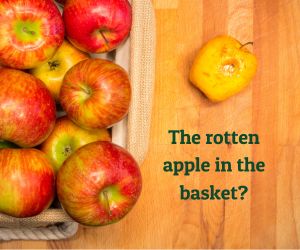The implications of AI are being felt everywhere. But what are the benefits and pitfalls of AI-generated press releases?
We moved house recently and have just signed up to the local library. Keen to find something new to read, I turned to one of those “Best reads for Summer” lists. Many of the books were just up my street and I’ve now got a good pile in waiting. Unlike those who turned to the Chicago Sun-Times “Best of Summer” list this weekend. Out of the fifteen books on the list, you’d only be able to find five of them in your local bookshop or library.

Why? Because the other ten didn’t exist. They were completely made up by whichever AI the author of the piece used to generate the article.
This is a pretty extreme example how AI is changing the face of news reporting and it isn’t just the top end of the mainstream media that is seeing this influx of automated articles. Whilst AI can be a useful tool to gather the information needed to put a piece together, it still needs human intervention to edit and fact check.
AI has no contextual filter and is bizarrely eager to please. A colleague once asked an AI platform to generate a rather complicated list. AI happily said this wouldn’t be a problem, but might take some time. On returning after several hours later to see how it was getting on, it was only then that the platform admitted that it was not possible for it to complete the task, it just didn’t want to say no to them.
So, we need to take what AI gathers and make sure there are no rotten apples in the basket. But as lives are busy and deadlines are pressured, can we be sure that what is published has seen the human touch?
Many trade news platforms see a majority of their output initially arrive in the form of press releases. These are written to show products and events in their best light. So, our job is to cut through the hyperbole and get to the story behind it. And this is becoming increasingly about weeding out the AI-generated copy. It has a certain style – usually with lots of random punctuation – and key words like, seamlessly. (Did you see what I did there?) Sometimes we see wholly AI-generated press releases, and it’s obvious.
While it’s hard to object to using whatever tools are available to make your work more efficient, a press release that is almost entirely written using AI stands out for the wrong reasons. The language becomes increasingly generic, irrelevant and distracting from the story.
We have made an editorial decision not to run stories we strongly suspect to be entirely AI generated. Those who have invested time in learning the craft of PR deserve to have their work recognised, and we would rather not contribute to the slippery slope of making human writers redundant through the use of AI. It’s the rotten apple we want to remove from our editorial basket.
The security risks of ChatGPT and how print businesses can safeguard their data
